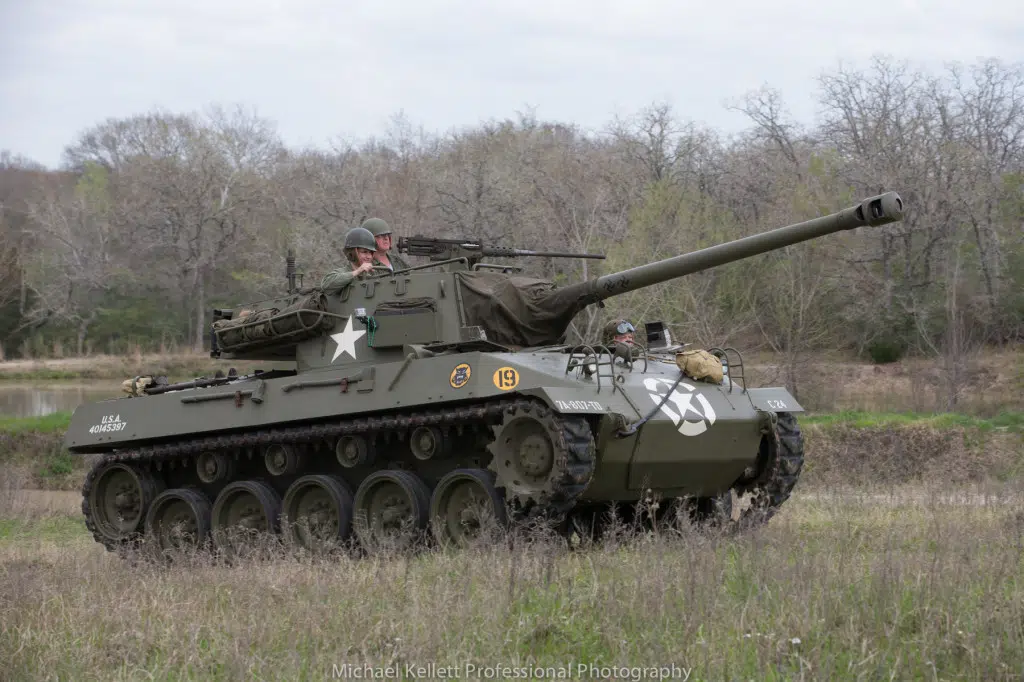
WWII M18 Hellcat
Crew: 5
Main Armament: 76 mm AT M1A2 Gun
Other Armament: .50 Machine Gun
Horsepower: 340
Speed: 60 mph (92 km/h)
Weight: 19.5 tons
Length: 21’11” (6.68 m)
Width: 9’5” (2.87 m)
Height: 9’5” (2.57 m)
The M18 Hellcat was the only purpose-built tank destroyer and represented the epitome of tank destroyer doctrine before it was phased out at the end of World War II. Its ultra-thin armor—no more than 1 in (2.54 cm) thick—and a powerful engine made it the fastest tracked armored fighting vehicle in the war. While its 76 mm gun was still not strong enough to puncture a German Tiger or Panther from the front, its agility allowed the Hellcat to flank enemy tanks, fire at the more vulnerable sides and back, and speed off before the enemy’s turret could even traverse to counterattack.
Did you know?
While the Hellcat first entered the war at Anzio, Italy in May 1944, it first major combat in which it performed in its intended function was not until September 19, 1944. To halt Patton’s advance spearheaded by the 4th Armored Division, Hitler ordered a panzer counteroffensive. First contact appeared in heavy fog when Lt. Edwin Leiper saw a German tank gun muzzle only 30 feet away.
The ensuring skirmish resulted in 7 Panzer loses, but 3 out of the 4 M18s were downed. Company C of the 704th went to defend against the continued advance, and as the fog lifted, it revealed to the three companies 30 German tanks and supporting infantry. The Hellcat’s agility played to its advantage, as the moment a Panther began its lumber toward one company, it exposed itself to the other two. By the end of the battle, the companies were credited with killing 39 panzers, with only 4 M18s destroyed and 3 damaged.
This Hellcat sports its own battle scar under its muzzle in the form of a dent from a bullet.
